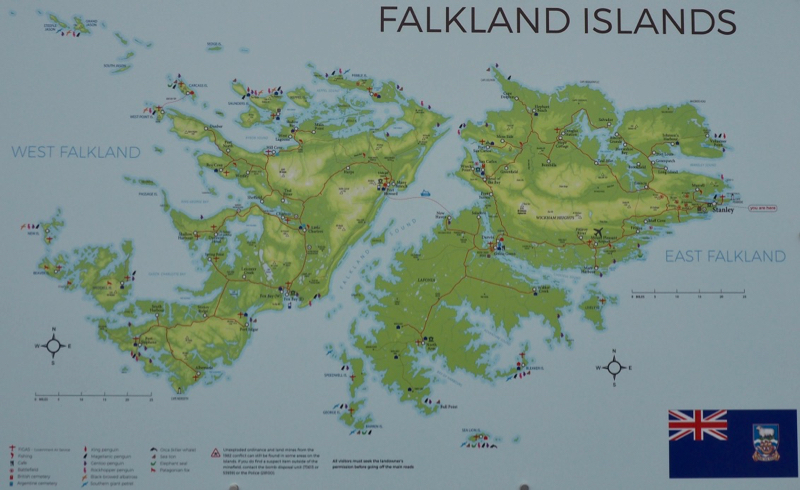
|
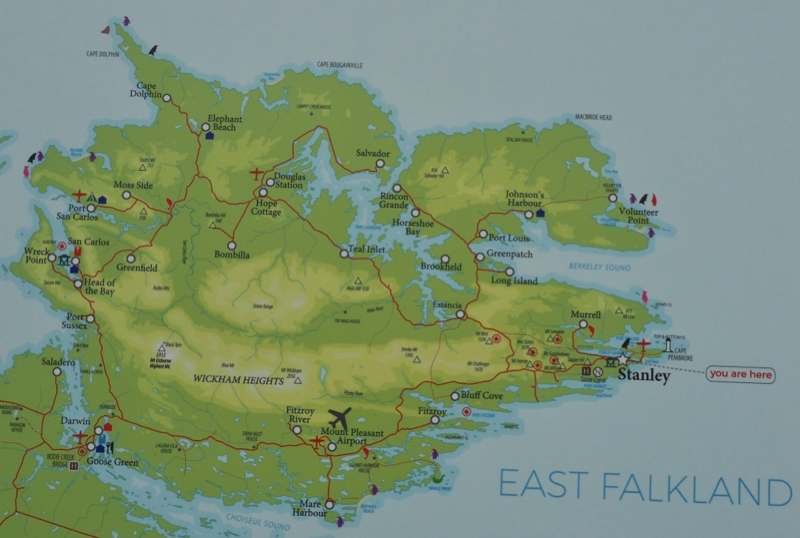
This is the island we were on. We drove from Stanley to Bluff Cove, to the west (left) of Stanley.
|
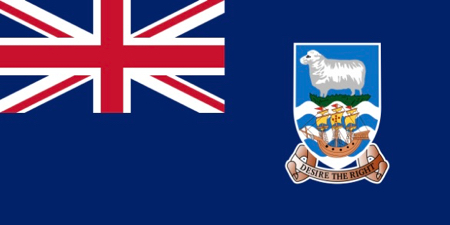
Flag of the Falkland Islands |


License Plates
|

|
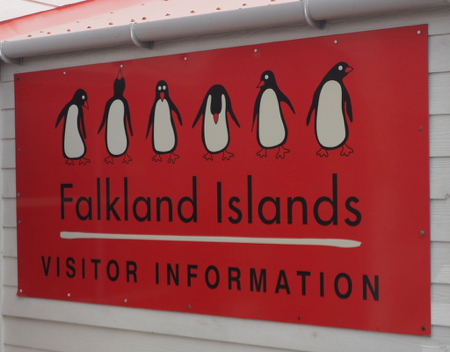
|
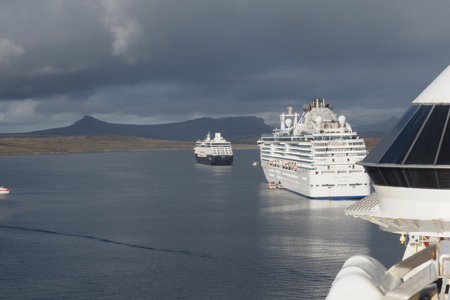
We weren't the only ones visiting today
|
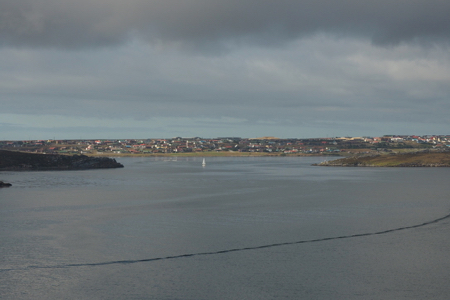
We anchored outside the harbor and tendered in to the cruise terminal |
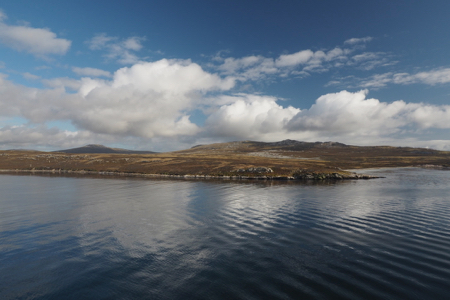
Looking the other direction from the town
|
We had pre-booked a HAL excursion to Bluff Cove, knowing that this was our only chance to walk among penguins on this cruise and we had not set foot in the Falklands before.
Our minivan driver met the group at the dock with a 16-passenger mini-van. The driver pointed out the “boot hill” where someone once lost a boot in the peat bog so he drove a stick into the ground and put his remaining boot on it as a warning to anyone else trying to cross the boggy field. Later, other workers and military men decided to add their boots on sticks when they were ready to be shipped home.
|
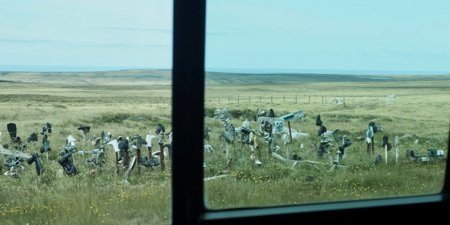
Boot Hill |
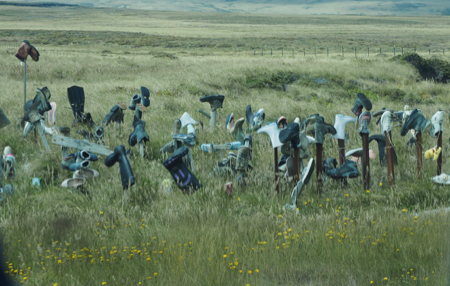
Boot Hill
|
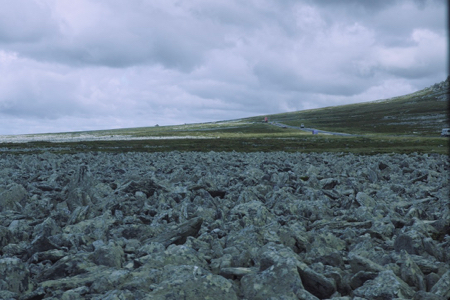
The island landscape is rather unusual. Much is peat bog but there are “rock runs” where large chunks of quartzite have run down from the hills. The runs are three-meters deep with gravel at the bottom. They form natural fences to keep livestock from roaming.
|
The van stopped at the end of the gravel road and four Land Rovers were there to drive us over the very rough peat bogs to Bluff Cove and the penguins. A naturalist met us at the cove and gave us instructions on how to behave around the penguins. We walked the area where hundreds of Gentoo chicks were waiting for mom and dad to return from the ocean with food for them. The chicks were quite large, almost adult size, but were still in downy grey fluff waiting to develop their black and white waterproof feathers.
There were also 20 King penguins. They are larger, with gold throat and orange lower bill and behind its head. Several of the kings had small chicks standing on their feet under their hanging belly fat.
|
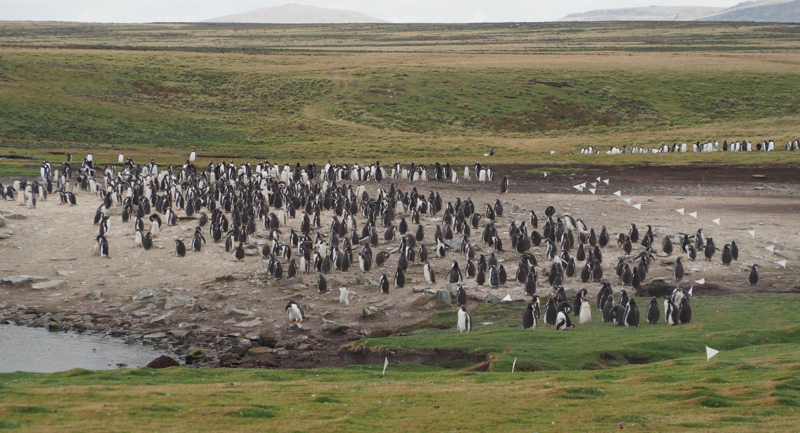
Lots of Gentoos
|
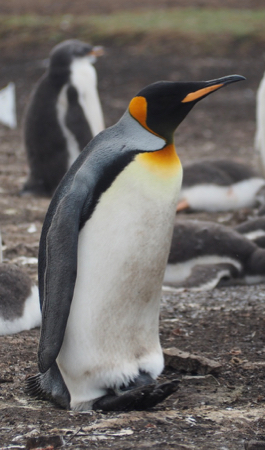
King penguin
|

King penguins sitting on their chicks to keep them warm |
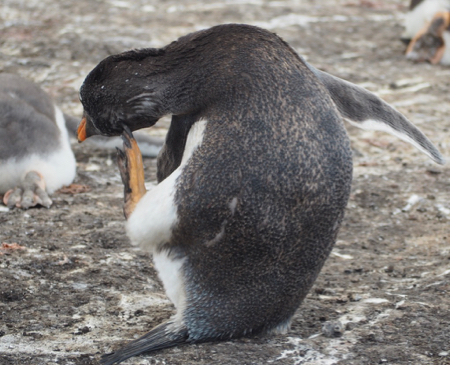
An itch |

Molting
|

Resting Gentoo chicks
|
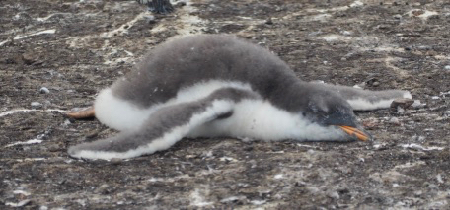
Resting Gentoo chick |
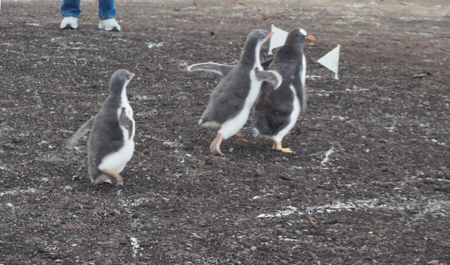
These two chicks chased (presumably) their mother all over the area for at least 20 minutes
|
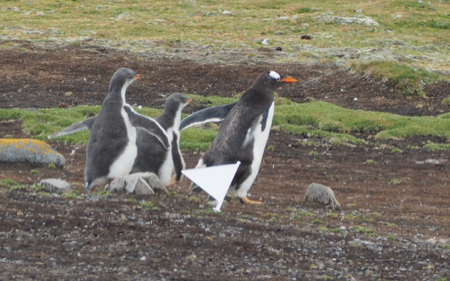
|
We walked on down to the beach and saw a few penguins riding the surf onto the white sand beach and then waddling back to the rookery.
|
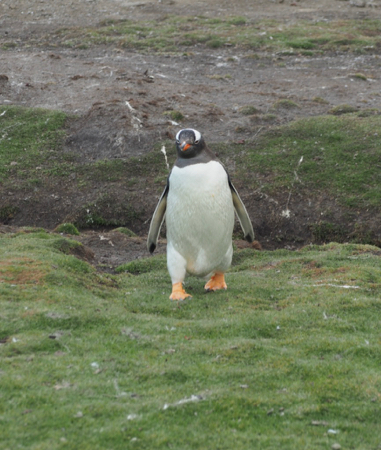
Gentoo waddle
|
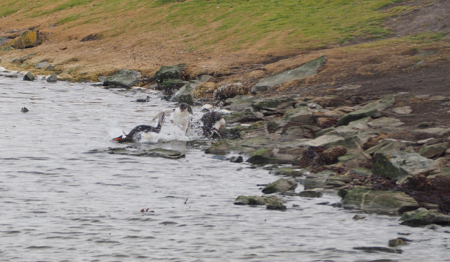
Playing in the surf |
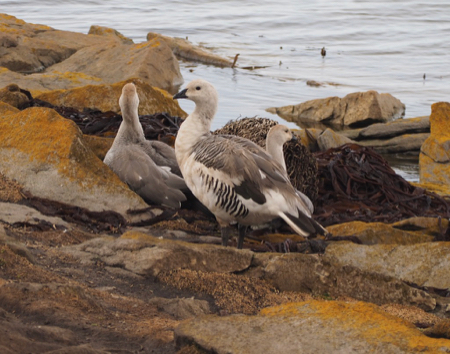
Geese - probably the Upland Goose |
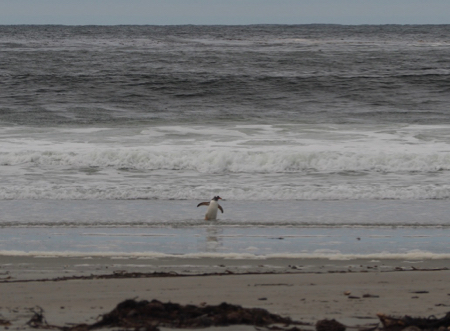
Coming out of the water after feeding and heading off to find its chick to feed
|
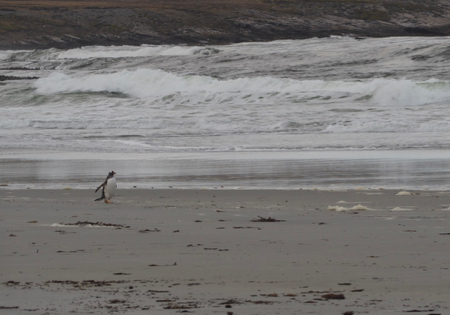
|
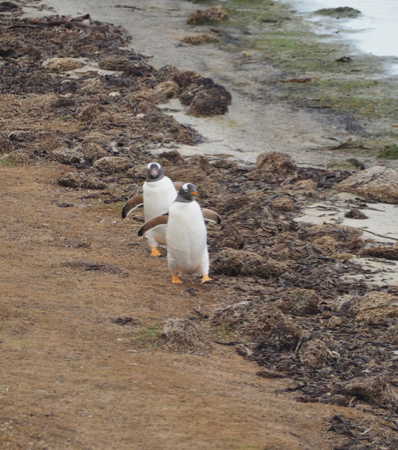
On the "Penguin highway" from the water to the nesting area
|
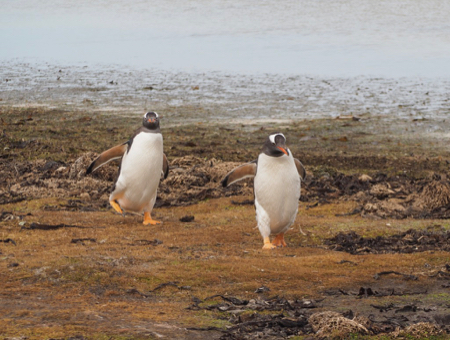
They are so funny to watch "walk"
|
Free coffee, tea, or cocoa and two home-baked cookies, scones, or cakes were served at the Sea Cabbage Cafe before the return trip to town. There is also a souvenir shop with lots of penguin things and Marino wool items. The owners make jam from Diddle Dee berries that grow in the bogs.
|

|
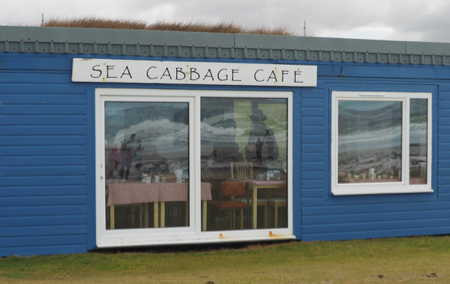
Nice coffee and scones! |
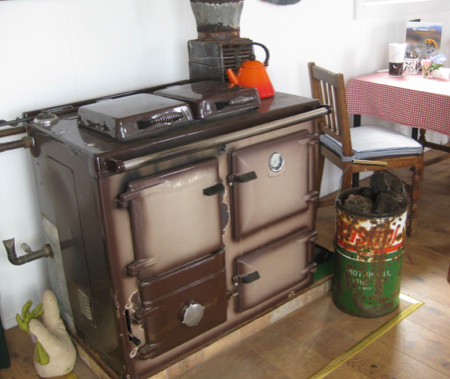
Old stove in the cafe
|
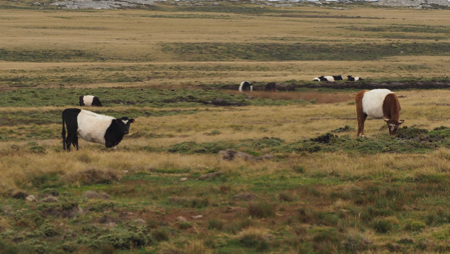
Belted Galloway cows |
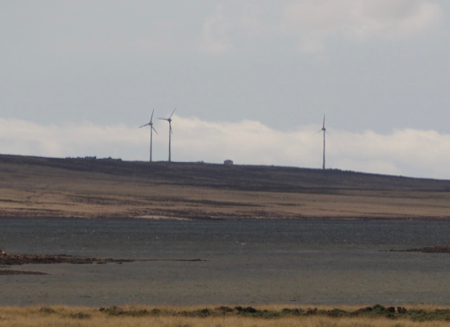
Wind turbines produce 40% of the island’s electricity. The rest comes from diesel generators.
|
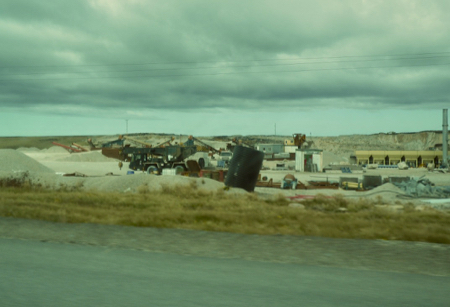
Gravel pit |
Back in town, we walked down Ross Street past the southernmost Anglican church, the crossed whale bones, the PO, the history museum, the bust of Margaret Thatcher, and the monument to the fallen from the 1982 war. Thatcher came here in 2013 after the citizens’ referendum to remain British passed by 99.8% of the 92% who voted.
|

Signs in town
|
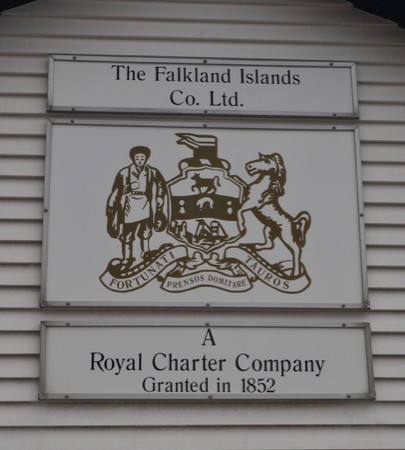
|
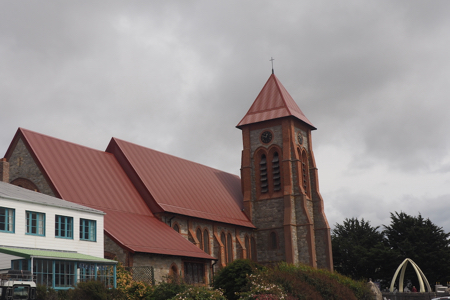
Southernmost Anglican church in the world, Christ Church Cathedral |

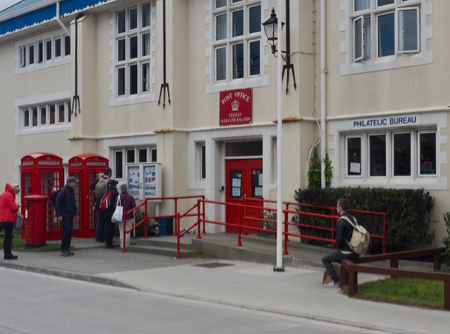
|
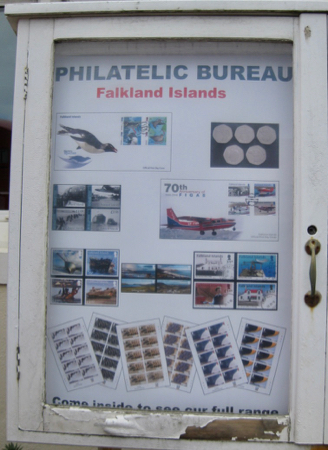
The Falklands have a very active Philatelic Bureau who issue many commemorative stamps that are purchased by stamp collectors all over the world
|
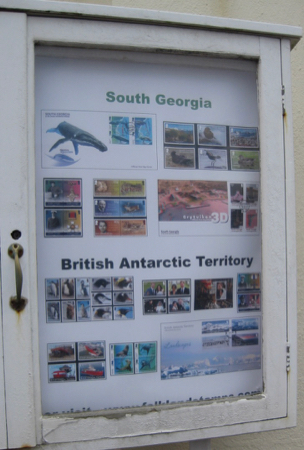
|

Whaling harpoon
|

Another "take" on a bathroom sign |
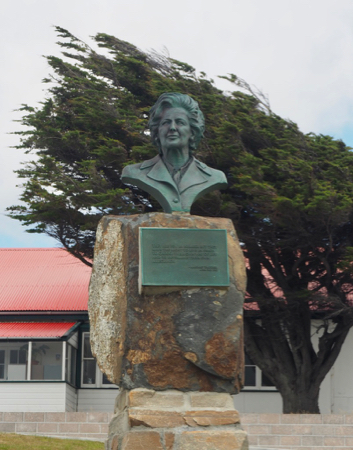
Bust of Margaret Thatcher
|
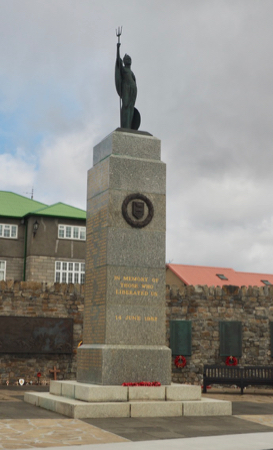
Monument to the fallen from the 1982 war |

Bird fishing -Possibly a Night Heron |
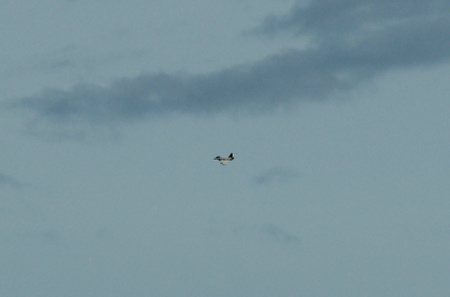
Jet flying by - the Brits still showing a military presence?
|
There was a very long queue to get on a tender back to our ship. But the weather was nice for this climate - overcast and 54°F. We got on the fourth tender and the line was still just as long.
We enjoyed our visit to the Falkland Islands and I am glad they are still British.















































